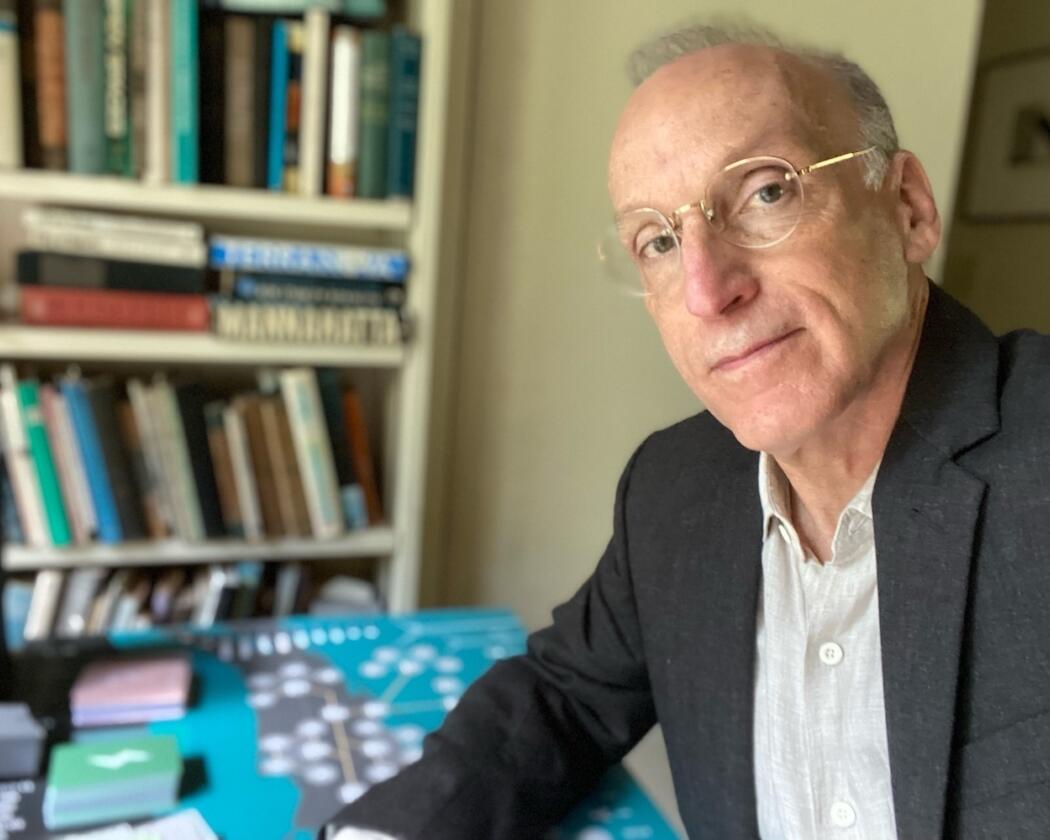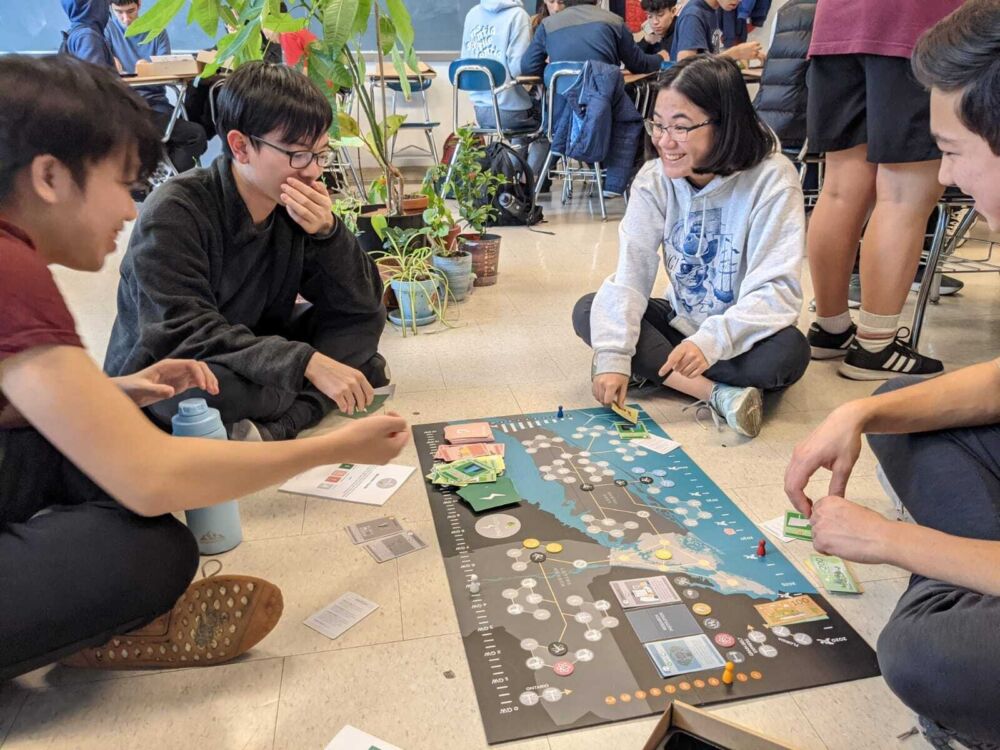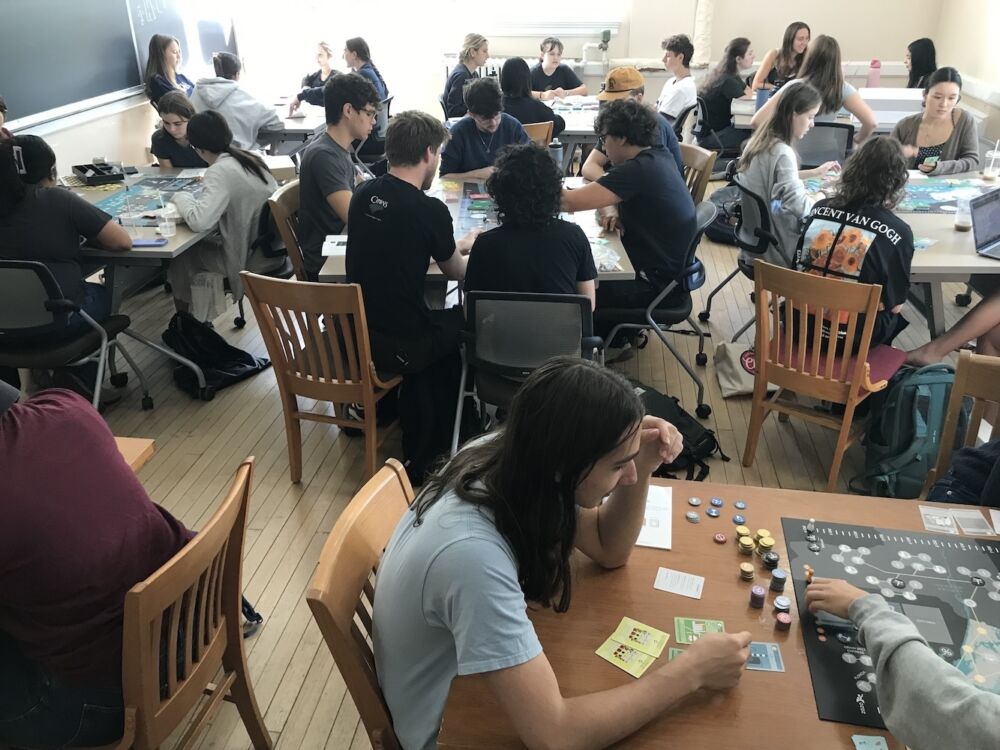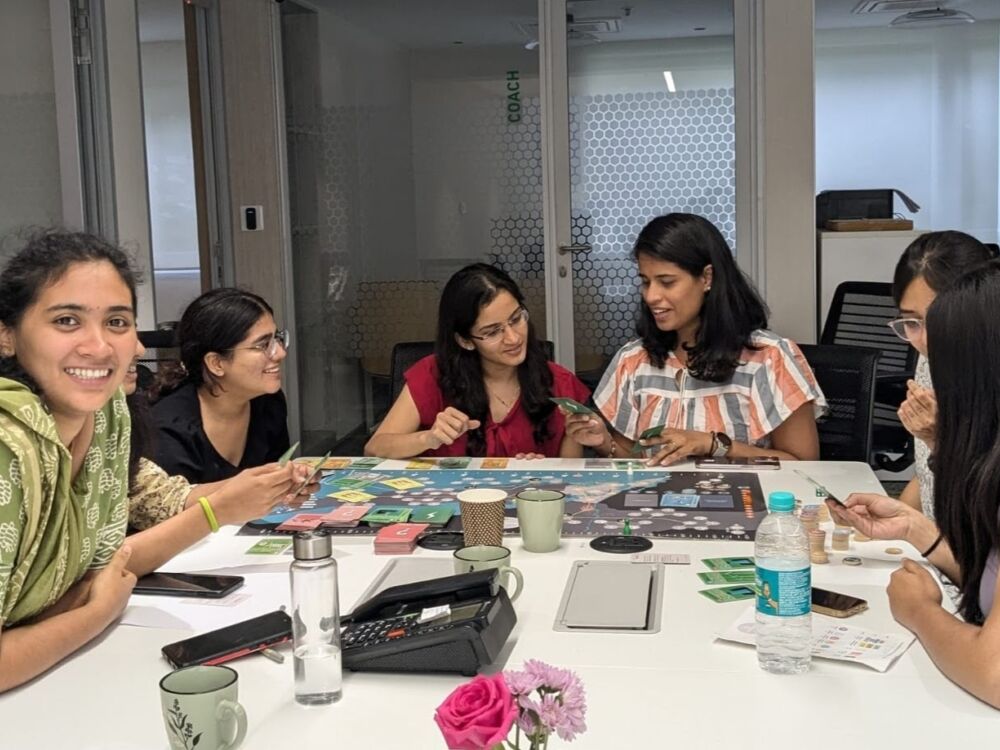
“It’s a very game-like problem: You’re trying to build things, and there are obstacles”
A Q&A with Richard Reiss, developer of decarbonization board game Energetic and founder of City Atlas
Richard Reiss founded City Atlas and created the board game Energetic, which gamifies the problem of how to decarbonize New York City. Photo: Richard Reiss
The decarbonization of New York City is extremely complex. Shifting away from oil and gas is difficult enough on the scale of individual buildings, as Skylight covers; for the city at large, it is a question involving major financing and large-scale infrastructural upgrades, held up by bureaucratic red tape, political forces, and, often, a lack of trust from the public.
Yet for Richard Reiss, founder of City Atlas, a nonprofit climate literacy organization, all this boils down to a very simple problem: We want to make progress toward clean energy goals by building more things, and there are obstacles in the way of that progress. In 2018, Reiss and a team of student interns realized that the situation of New York’s transition to clean energy could be easily gamified, which led them to develop Energetic, a board game where players work together to model decarbonizing New York City.
The game works by convening a group of 4 – 6 people who must work together to chart a clean energy future by strategically investing in infrastructure over a period from 2021 – 2050. Players are assigned roles — activist, politician, entrepreneur, engineer — that shape whether clean energy projects happen. They then draw cards that give them the ability to build clean energy sources and storage, working toward a collective goal of delivering enough clean energy to power all of New York City.
Since its launch, Energetic has been adopted at high schools, universites, public libraries, and by players at NYSERDA and ConEdison. Skylight caught up with Reiss over Zoom from his home in Woodstock, NY to chat more about the decision-making that went into creating the game, and how he’s feeling now about the next chapter of its development and New York City’s clean energy future.
This interview has been edited and condensed for clarity.

Energetic is geared towards players of all ages, and has been used everywhere from high school classrooms to ConEdison convenings. Here, it is being played at Stuyvesant High School in Mark Henderson's Climate Literature class. Photo: Courtesy of Energetic/Yuchen Liu
Skylight: People across New York, across America, are choosing to support a transition to clean energy in all types of ways. Skylight’s approach is amplifying the story of solutions to common building problems. Why is your answer to the problem of the clean energy transition a game?
The energy story is really the heart of it, right? There’s no easy way to find out how you would actually do it — how you would actually decarbonize New York. Our initial thought was doing something like making an infographic, then making it interactive. And the game idea came up: We realized, wait, if we wrote rules, it could actually be a real game.
It came together easily, because it’s a very game-like problem: You’re trying to build things, and there are obstacles.
The thing that turns out to work really well is that it gets past the political barriers in places where people resist the issue, because everybody likes a game. It’s a cooperative game, too, so you’re playing as a team. And so, pretty much the moment people agree to play it, they’re already trying to solve the problem, because that’s the point of playing it. I think that’s a great educational approach in general, because people really learn something when they solve it for themselves.
I was wowed by just how many behind-the-scenes decisions had to be made in order to make this game playable. One of them that I was taken by in particular was the goal to collaboratively build the capacity for 16GW of carbon-neutral power — either by 2050, or by 2035, if they’re following the Green New Deal progression of play. I’m curious how you decided on 16GW.
16GW is a ballpark. 2,000 watts is the [widely agreed upon daily] standard, to try to get everybody in the world 2,000 watts. It’s a lot less than the US, per capita, but it’s decent for a New Yorker, because you have less energy use here — New York is an energy efficient place. It has a subway, more than half of New York doesn’t own a car, so, right off the bat, New York is going to be energy efficient. (2,000 watts x ~8 million New Yorkers = 16 GW of power.)
A couple years ago, after we did the game, Urban Green Council did their report on heat pumps, and [found that] when you electrify heat for the city, that’s going to be the biggest energy demand. Their model actually comes in at 16GW; you really need to get to 16 just to provide heat and run the city.
If people are playing [Energetic] and they’re like, “Wait, 2,000 watts is barely anything, I want more power,” I’m like, “Okay, just keep playing. See how much you can add, because it’s up to you.” But the bottom line is it’s actually hard to get to 16 [GW].
Something else I was struck by in the game is how much random chance factors into the gameplay. Every turn, the players have to contend with “random events” that just pop up and shape the clean energy future. There are options like cloudy days, which are going to affect solar stability, but there are also options like mosquitos moving north and a migrant crisis, and I thought those were particularly fascinating. How did you choose to factor in things like public health,politics, and economic shifts to the gameplay?
We designed the game in 2018, but City Atlas had started in 2011, so we had seven years of reading scary information. So it was a catharsis. We made [the scary information] into a deck of cards.
Some of them have a direct effect, like, a hurricane knocks out a wind turbine or something, but the public opinion scale is sort of a composite of public health and politics. It’s not a perfect way to register a few separate things, but it works in the game pretty well as a driver — you’re losing public opinion, or struggling with public opinion, in order to build things that aren’t popular.
That’s a pretty clear-cut dynamic, right? If you and I got a billion dollars and said we were going build [a nuclear power plant], within 24 hours of us giving a press conference, there would be people organizing [against it], right?
The game has an election every four years. So you’re either in or out of power. [In real life,] what we had in our last election is an outsized impact.
Let’s talk about President Trump and what he’s doing now with rollbacks to clean energy initiatives. There is a warning in the Energetic handbook which says, “The energy transition modeled in Energetic needs to happen with emergency speed if we are to maximize our chances of avoiding a Hothouse Earth. And yet, if you are not noticing around you, it is not happening.” The gameplay begins in 2021, and now here we are, nearing the end of 2025, and Trump’s administration is canceling millions in funding for offshore wind projects. It feels like we’re backsliding, rather than making progress. So, how are you feeling about how we’re doing?
Reiss puts his face in his hands.
I’m sorry to upset you! Do you see his recent attacks on wind as a “random event” that will set back overall progress, or are you seeing it as a sign that this work is going to be stymied in a final way?
To properly answer that question, I have to come to New York [City] and meet you in a bar.
I don’t think it’s final. It’s terrible, obviously an enormous drag, that Trump came in. It’s different this time around. He was also in office when we developed the game, right?
I’m not sure what’s going to happen with wind, [but] New York and California and the states can continue to work. It wouldn’t be surprising if we continue to decarbonize at some rate, even with Trump, simply because there’s more solar; I mean, California and other places that are already doing it will just continue.
I’m actually working on a slightly modified set of instructions to play the game with [just] solar. Vassar College uses Energetic; [Philosophy] Professor Jeff Seidman, he’s used it for a couple of years. His class is built around also teaching what New York State’s policies and goals are. So, what I think we’ll do is have them start the game in 2026 and only use solar, and if you can win the election in 2028, you can move back and start doing wind.

Vassar students in Jeff Seidman’s 2025 climate solutions class play Energetic. Photo: Courtesy of Energetic/Jeff Seidman
How did you start learning and caring about decarbonization?
I credit [environmentalist and author] Bill McKibben, because he was one of the first people to write [about it] for a popular audience, and his book The End of Nature, which came out in 1989. My brother gave me a copy and told me to read it, probably a couple years after that, and I took it at face value.
In that period, in the 1990s, I think my default expectation was that the financial system would absorb this [problem] and somebody would make a lot of money off it, and that would produce solutions. But the thing is, it didn’t really happen. Then, in the 2000s, I began to think it would be combination of positive forces — that some of Wall Street would want to push back on the fossil fuel interests, and that the universities [would] integrate teaching [about decarbonization] — and then you’re going to have a whole generation of people who get it, right? But that didn’t work.
So, you were like, “The world is going to take care of this,” and then it didn’t?
Yeah — “Powerful actors in the world are going to take care of this,” right? ‘Cause most of the world doesn’t have that much influence.
I was actually directing television commercials. In 2005, I started a non-profit, pro bono design program for people in creative fields to do their portfolio work in the public interest. We did a bunch of projects [about] climate change. One was an interview with Wally Broecker, who is a pioneer of climate science — he’s the guy who popularized “global warming” as a phrase, in about 1975 — and [it convinced me that] this is really bad. It’s existential, and it’s existential for New York City.
We began to focus more on climate, and I got connected. I went to a conference called Tipping Point, whose goal was bringing creative people together with scientists. After that, the CUNY people asked if I would be interested in going in on a proposal for the Rockefeller Foundation to start a media project, to explain climate change in New York to people in New York.
Both at City Atlas and in other stages of your career, it seems that you’ve structured your life around developing public awareness of what we need to do to stop climate change, and you’ve often worked with students to make that happen. Why do you like working with young people on these things?
You’re not really going to move the needle in a media market like New York until you’re at the scale of an institution. But you can give hands-on experience to people who then move out into the world, and they know how to do whatever it is you’ve done.
So you get a benefit in both ways, where you can get the content, and you also have the students learning, and you don’t need salaries, you don’t need to create a staff. They want to work on it. That’s a pretty good method for improvising, the way that we did it.

Women from Nadhi-She for Climate, a women’s advocacy group, play Energetic in Bangalore, India in 2024. Photo: Courtesy of Energetic/Deepak Sridhar
What’s next for Energetic?
We want to make it for other cities. We are trying to actually spin Energetic off to Indian cities — it’s used in some universities as it is, but to make versions for India is the goal.
We also want to make an online platform. And we have a draft of the building version. That is actually a little more complicated because it’s a different scale, but the hope would be that in a class, one half of the class could be playing the grid, and the other half could play the building [version], the block-sized, and they could play on the same timeline. So if a hurricane hits on the grid, it’s also hitting the block. That’s a class I would have liked to be in.
I think for students that’s a really good version, because they live in buildings. Every student in New York, they’re in a building that has to change. The city is going to be continuously changing throughout [their] life, and these are all of the directions that it need[s] to happen. So, both for the workforce opportunities and the practical education around it, [we want to show them:] Here’s why we have to do all this.
We’re teaching people because you need a population that you don’t have to start from scratch — that they get it.
